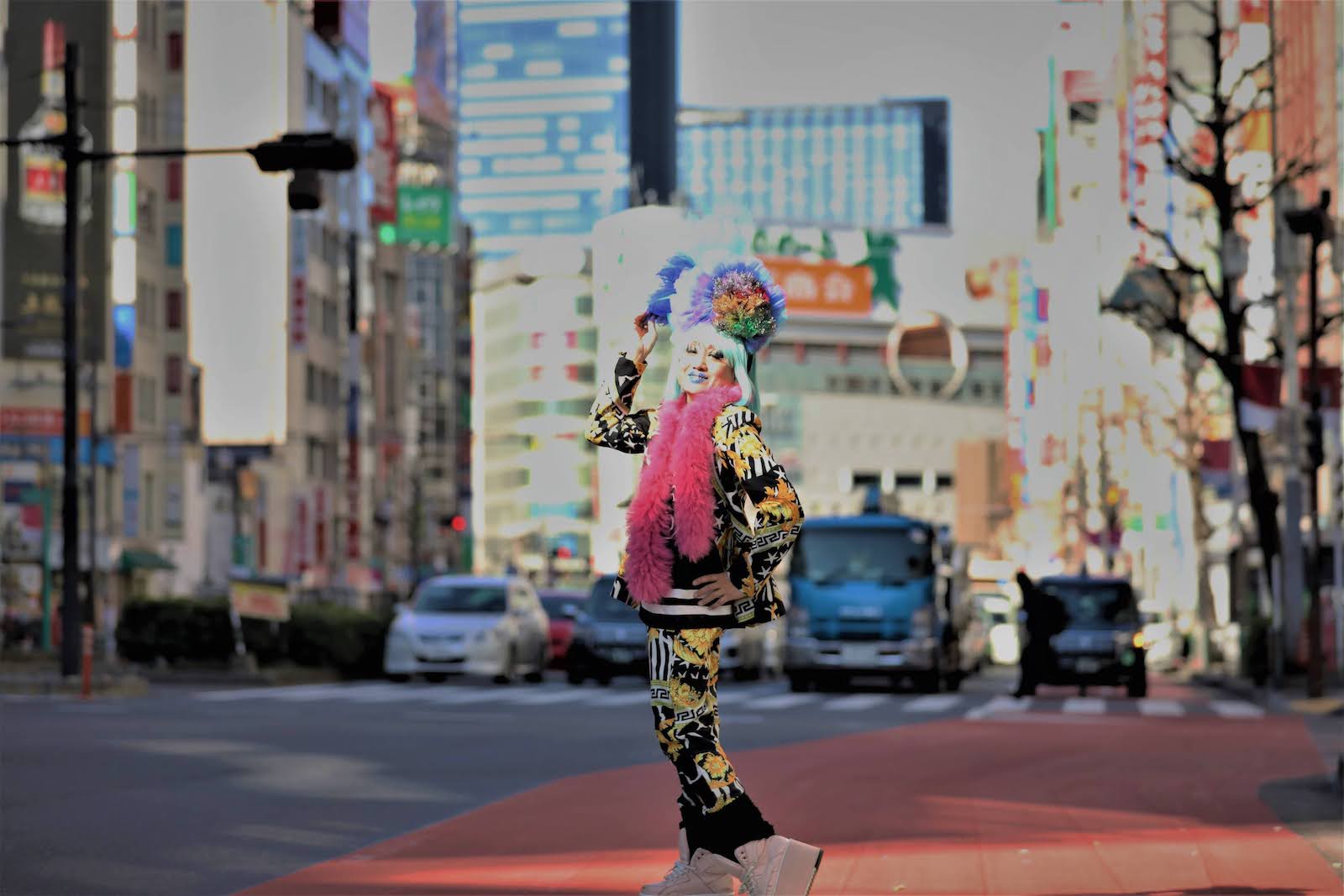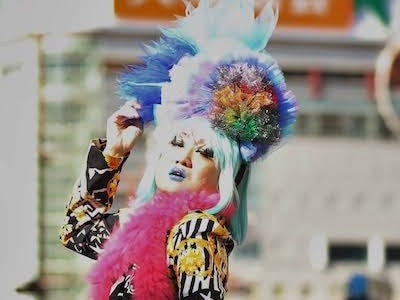“Monday Museum?” - Art requires creativity from the viewer
– You have said that wearing the headpiece is your art and that you are like a walking exhibition.
Vivienne:
It’s like architecture on top of your head! [laughs]
I believe that wearing such things is a way to reclaim ritualistic aspects that are lost in the city and to become a modern primitive.
– When you walk down the street, everyone turns their head to look at you like they are viewing an artwork.
Vivienne:
Some theorize that art can only exist with the viewer in front of it. In other words, can art exist on Mondays when most of the museums are closed? Can there be a “Monday Museum” instead of a “Sunday Museum?” *1 Of course the work is physically there even when the museum is closed at night, but I believe it exists as “art” only when the viewer is present.
I often work as a film critic, but the films I choose to critique can be totally boring. [laughing]
Films are not made for the director or the producer, so the viewer can watch it anyway they want even if it’s not how it was intended to be seen. The more mediocre the film, the more there is space to read into it, and this can make the interpretation even richer. It doesn’t matter if it’s right or not because there are no correct answers. It’s how you can talk about it in your own words. You can even take the film away from the creators and claim it yours by understanding it on a deeper level and discover new meanings.
*1 “Sunday Museum (Nichiyo Bijutsukan)” is an art educational program that has been airing for more than 50 years every Sunday on Japan’s public broadcaster NHK.
– Would you say that the viewer not only is a receiver but also a contributor to the artwork?
Vivienne:
Yes definitely. For example, two people who are both 20 years old would have very different experiences growing up – even twins have completely different personalities because they go through different things in life. Each of these unique experiences influence how we feel when facing an artwork and when it comes to trying to describe this feeling with your own words, I believe that even more creativity is required than the actual artwork.
The artist and viewer are not in opposition. Their roles are interchangeable and power dynamics can shift. Ultimately, I think they are equal.

Art can exist beyond critique and is not obliged to give an answer
– Whether it be film or art, would you say that some trigger the viewer’s imagination more than others?
Vivienne:
That’s probably true. However, film is not only an artform but also an event. Directors, producers, and actors want their film to do well on the opening week, so they try to sell the film to us by communicating how they want it to be seen. They will tell you: “Don’t give away spoilers!” But to be honest, I couldn’t care less! [laughing]
There are many ways to experience art and also many ways to nurture that experience. The same film that you watched a week ago will be totally different when you watch it today, in 5 years, in 10 years, and so on. Nothing changes in the film, but we are reborn every day. That’s why I believe in a “Monday Museum” because artworks only exist and truly shine when there is someone watching.
– Artwork by people with disabilities are often born out of everyday activities and not always meant to be seen as “art.”
Vivienne:
Many artworks become interesting as you logically analyze it after asking the artist “what is this?” However, I believe that some art can exist beyond critique and are not obliged to give an answer. There are things that you just can’t figure out any further. For example, there are some ransom letters by kidnappers of unsolved cases that are considered to be classics. You just can’t understand nor explain it. But there is something there. Some artworks are like this.
The headpieces are an attitude towards life but also an antenna to sense things that are usually invisible
– You once said that when you put on makeup and wear a headpiece the way you look at art and film changes. Is that because the viewer is mirrored in the artwork?
Vivienne:
There is a ritualistic aspect to putting on makeup and wearing a headpiece. Young people going to Shibuya for Halloween often say that it’s fun to dress up because they can become someone else. But it’s actually a display of who you really are. The more makeup you put on the more exposed you become and eventually everything is revealed like your skin is inside out. Fundamentally, makeup is not about transformation but an act to revert. The headpiece is the same. It’s a glimpse to our wildness within.
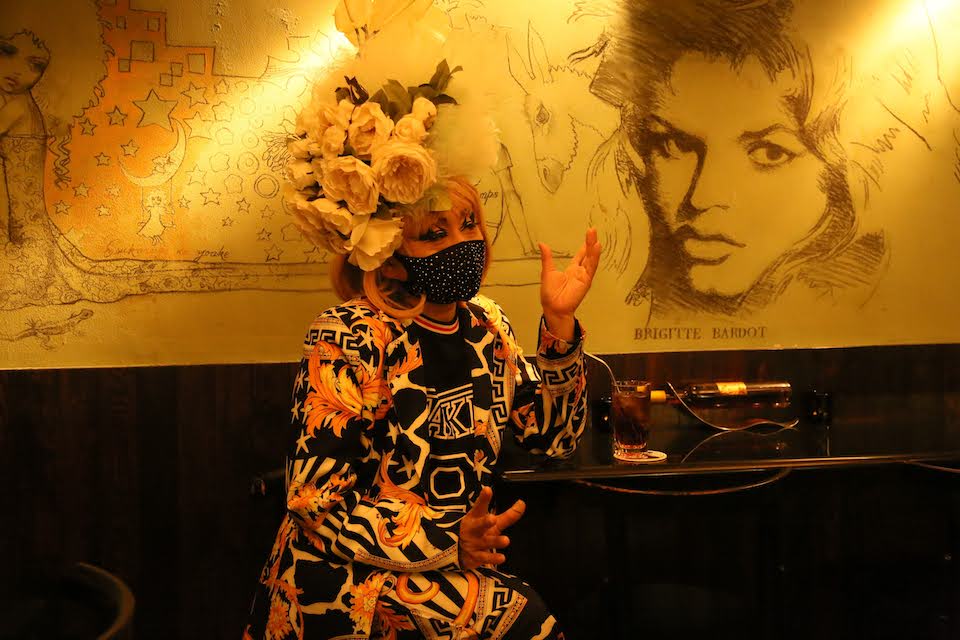
– Is it ritualistic because it’s an “act to revert?”
Vivienne:
For example, Marie Antoinette’s hair, an Oiran’s Datehyogo hairstyle which is similar to a traditional Japanese courtesan’s hair or Hinaningyo doll, traditional outfits from around world, drag queens, Japanese disco girls’ hairstyles from the 80s, and a samurai warrior’s armor. I believe these all had the same function. During the Sengoku period of Japan, war was fought differently, like how it was important to have a Noh performance on the battle field. This is completely absurd! [laughing]
There is no reason why you have to dress up like that or have to dance Noh on the battle field. It was probably just an attitude towards life. The headpiece is also an attitude towards life, but it also acts as an antenna or a net that captures things that are usually invisible.
That’s why when you go to the movie theater or a museum wearing the headpiece you see things differently. It’s the same when you walk around town. I must say though, you also stop seeing things that you used to. You stop noticing normal people and you trip over things more easily! [laughing]
-It’s about “shifting” rather than “expanding”
Vivienne:
It’s quite straightforward. In a ritualistic sense, these were tools to communicate with things we usually cannot see or feel. Things that are not human. The armor of a samurai and the costumes of Ginza madams were originally tools to go up against people of different classes or occupations, but their ritualistic purposes and functions were gradually lost.
However, when people get tattoos or dress up or paint something on the wall, I feel like these are desires to recover what was lost. Fashion, art, music are just provisional names given to this impulse.
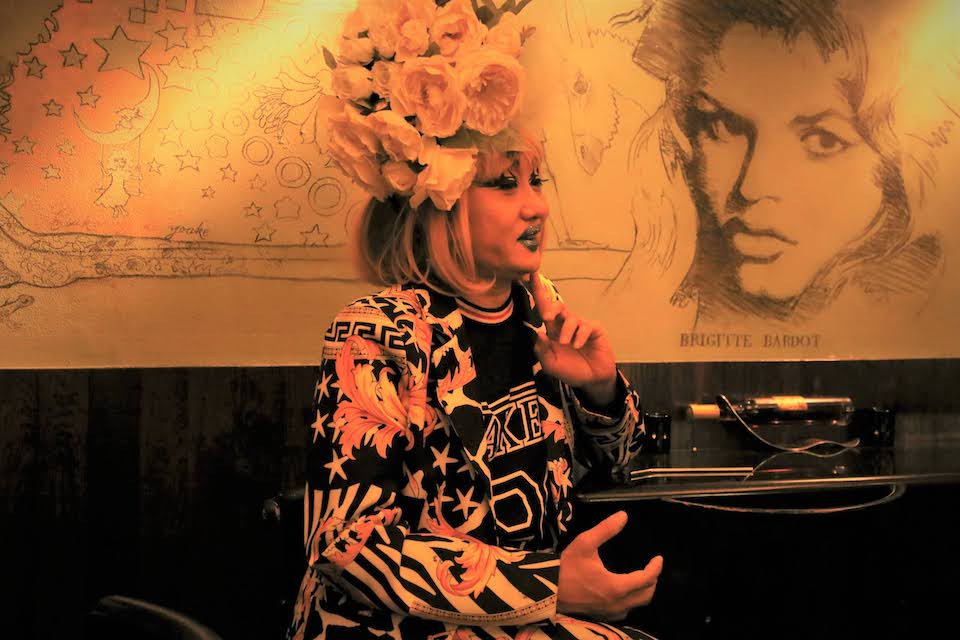
Making headpieces puts you in contact with an impulse that helps you realize your deep desires
– It’s true that dance, music, and art gives us a glimpse of something primitive.
Vivienne:
Everything used to have a meaning and a purpose, but the times are not like that anymore. Art was always seen as “artificial” and “fake.” Even in architecture, things that are vernacularly constructed or born out of regional traditions are considered more “correct.” That’s why art will always lose when it’s up against nature because it is “fake.” But there’s nothing bad to losing. What matters is how you lose “properly.”
– If wearing makeup and a headpiece brings out what’s inside of you, does that mean the more you do it, the closer you get to this primal impulse?
Vivienne:
Essentially, I think that makeup and the headpiece are ways to come in contact with moments when our civilization believed in these primal impulses. When I teach workshops on how to make headpieces, many people initially take part because they want to do “fashion”, but eventually they understand that it’s more than that.
In the workshop we spend about 6 hours to make the headpieces. It takes so long! [laughing] But that’s the time it takes to reveal what’s within you. Over time, you start to understand what you want to do and what are your inner desires.
The role of a drag queen as an “unnamable presence” in society
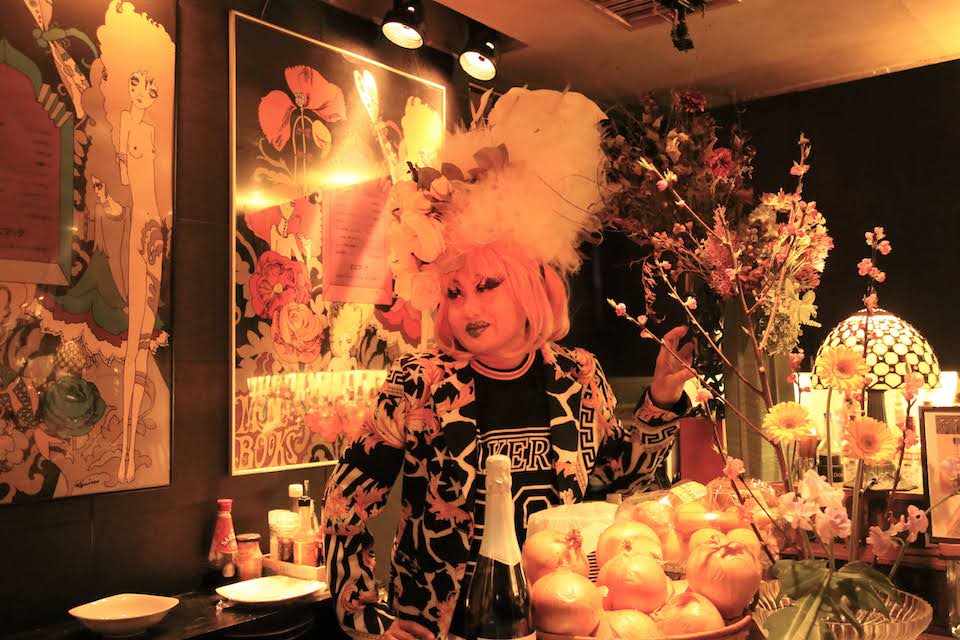
– You often talk about “stirring up” things in order to breakdown boundaries between gender, fashion, architecture, and art. Is the workshop one of these attempts?
Vivienne:
The name “drag queen” comes from showing up with long dresses that drag along the floor, but I also think there is another meaning. It relates to how they can stir things up at a party and “drag” everyone along to a completely different kind of experience.
The term came to Japan around the 80s~90s together with films like The Rocky Horror Picture Show (1975), but I think as a concept it has existed everywhere for a long time.
For example, American philosopher and activist Susan Sontag wrote in her essay Notes on “Camp” (1964) that camp was something unnatural, artificial, and exaggerated. She defined Oscar Wilde and David Bowie as also part of this hard-to-describe sensibility.
There were similar ideas to this in the past, although it was not called camp, like how we can see in Velázquez’ painting from the 17th century fortune-tellers and people with dwarfism depicted together with royal members.
During this period, there were people who were just “unnamable” or could not be categorized in the court. Common folk were not allowed to see or directly talk with royalty, but these people who were outside of social categories were allowed to play or provided consultation.
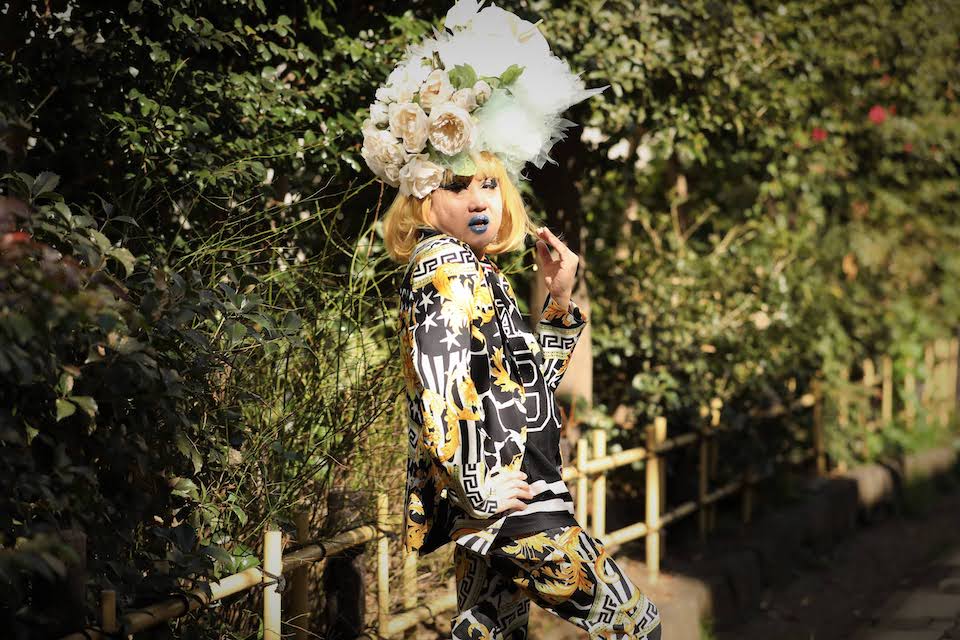
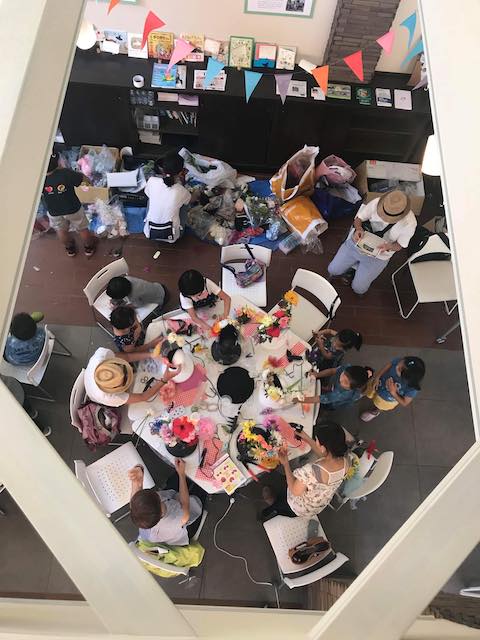
Photo provided by Vivienne Sato
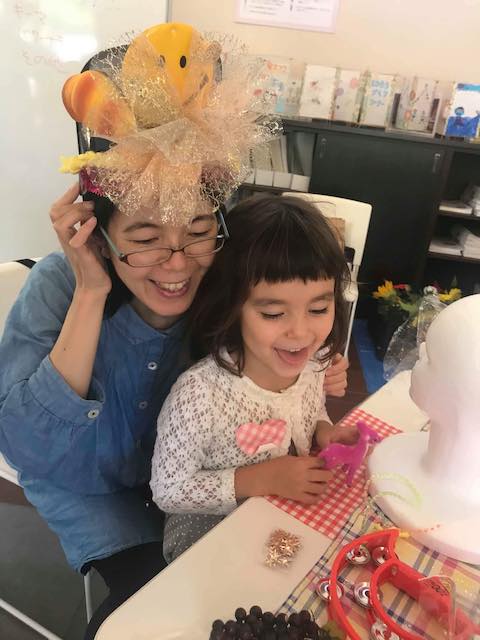
Photo provided by Vivienne Sato
Exposing “unnamable roles”, “unnamable time”, “unnamable gender” in the ordinary
Vivienne:
To be blunt, it’s because there was a demand. Everyone has hidden feelings or something unnamable within that has to be expressed.
Often people ask me at the workshop: “When should I wear a headpiece?” They come to the workshop but don’t know exactly what or when it’s for. But no one buys a CD knowing exactly when they will listen to it, right? So, it’s important to have time and space within you that is undefined and that doesn’t have a name. This is one of the purposes of the workshop.
– Society requires us to comply to many roles which is both frustrating and a lot of pressure. But sometimes we just want to be something that’s not defined by others.
Vivienne:
That’s so true. Maybe the headpiece is just symbolic to how I am trying to expose “unnamable roles”, “unnamable time” “unnamable gender” in the ordinary.
– And those are modern primitive and ritualistic impulses that we have lost.
Vivienne:
Everything from meetings, concerts, theater, university classes, and even drinking with friends are done online these days. TV makes you narrowminded the more you watch, and the Internet gives you a false sense of understanding. But what we really have to pay attention to are values that are not on TV or online. When you think of it that way, those who make information accessible have a lot of power. No one really notices this but it’s very scary. The most widely viewed doesn’t mean that it’s the most important – it’s just one aspect of the big picture. Our world cannot be replaced by the Internet.

Photo:T,Obara
By becoming one of the many minorities in society you connect with diverse perspectives and different ways of life
Vivienne:
When I am invited to events that are for the revitalization of a town or region, I do something related to film, but I also do a workshop that transforms kids into drag queens.
– That sounds like fun.
Vivienne:
There are many minorities in society other than sexual minorities. Some love noise music but feel like a minority because their teachers and siblings don’t understand.
I wanted to teach these kids that there are different values and other ways to live life.
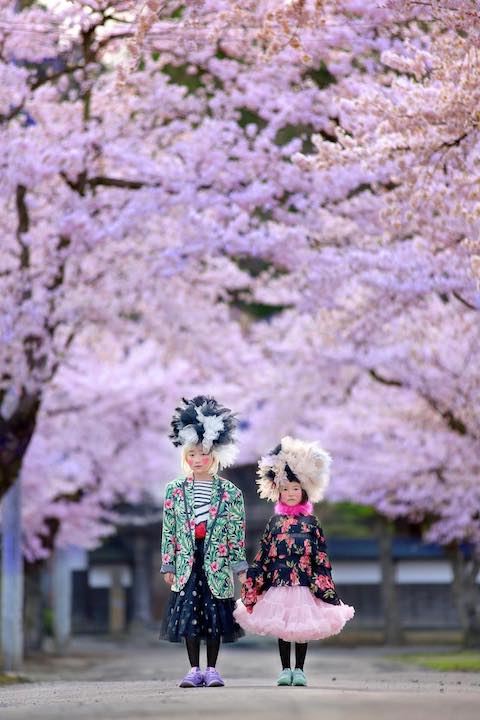
Photo:T,Obara
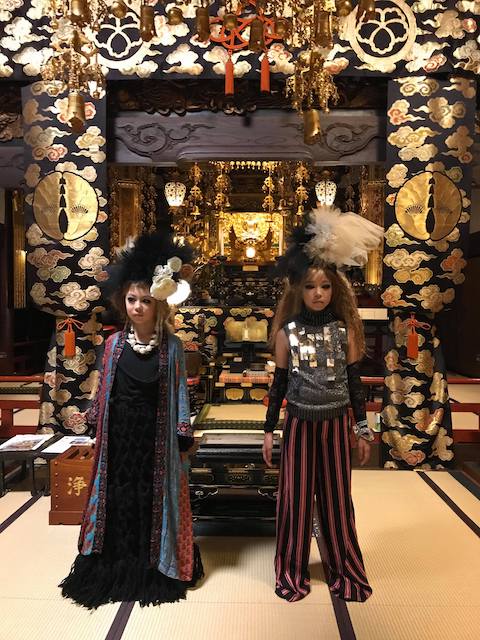
Photo:T,Obara
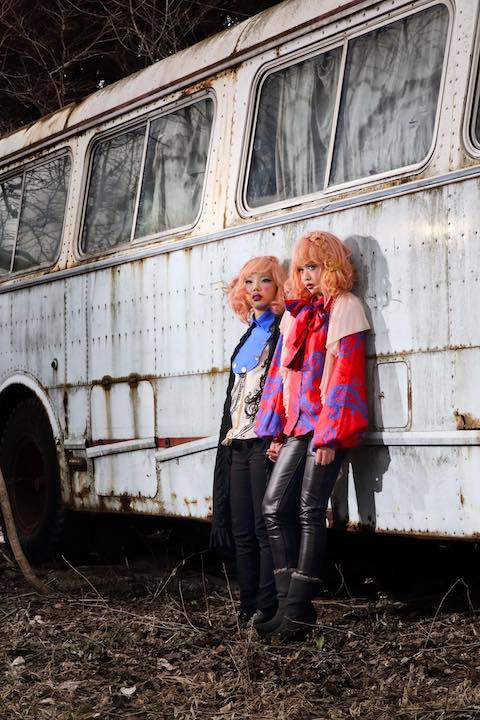
Photo:T,Obara
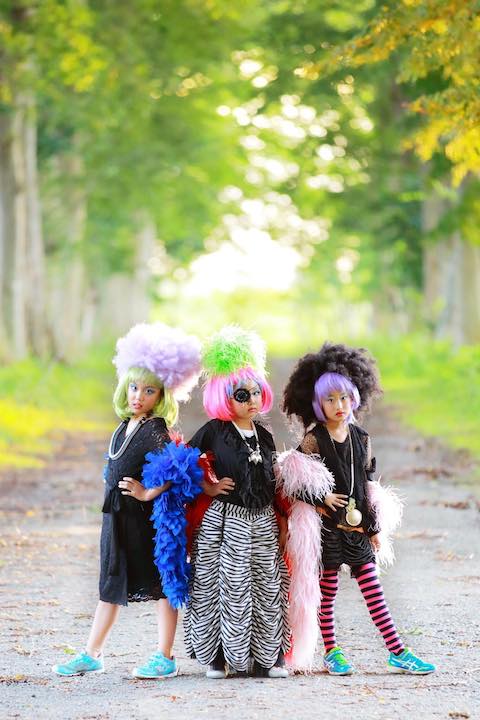
Photo:T,Obara
A hidden charm within both the people and the land are revealed through many layers
– These are really nice photos.
Vivienne:
We shot in non-touristy locations that only locals knew about and were very familiar with.
The children in these photos are cute not because of their outfits with the headpiece and makeup. It’s because these children, who are between 4 to 15 years old, are expressing themselves in a way that they have never done before. They are revealing a side that neither their parents nor they themselves knew about.
– The local landscape also really stands out.
Vivienne:
The kids bring out a charm in the location that no one noticed before. The makeup and outfits reveal a hidden side within the children and their presence in a specific location in return brings out a hidden charm in the space – it’s like they mirror each other up-side-down.
I believe that revitalizing a region and bringing out a hidden side in a person are the same thing. I was able to have people recognize a charm both within themselves and where they live.
I do these workshops all over Japan. In November of 2020, I did one in Matsuyama Ehime with 50 children.
– It would be good if many people can experience being a minority.
Vivienne:
Everyone is a minority!
– That’s true. It’s important to realize that.
Vivienne:
That’s why I tell people that I am “anti-LGBT.” I get in trouble for saying this of course! [laughing]
But the goal is to get rid of the word “LGBT.” I don’t think there is any point in categorizing who is L and G, or to say that I am B and you are T, and so on.




